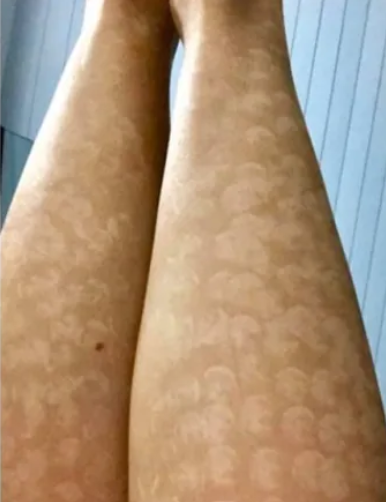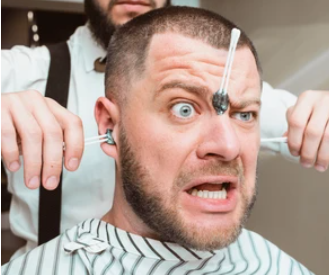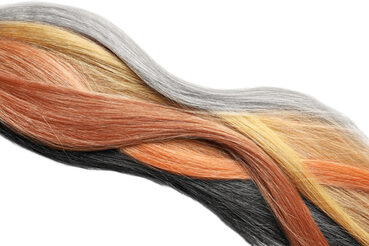Electrolysis vs Other Methods
There are several ways by which you can get rid of excess body and facial hair.
- Electrolysis is a permanent solution for removing excess body hair. In this process, a probe is inserted along the hair shaft and then an electric pulse is sent to the root (papilla) which destroys the germinative cells. This makes the hair release from the follicle, which is then removed. First used in 1875, electrolysis is still, to this day, the only medically proven method of permanent hair removal and is the only method of hair removal classified as "permanent hair removal" by the FDA.
-
Laser is effective for reducing excess hair. Laser targets the hair by using mild radiation that is attracted to dark-coloured hair (melanin) with the help of high-heat lasers. This is why your skin needs to be light and your hair needs to be dark. Laser can remove existing visible hair, but only permanently destroys 1 in 6 hairs at each treatment. These poor results from Laser are because the bulge and its stem cells are relatively transparent and therefore immune to heating by laser light. With laser hair removal, the laser beam connects with pigments (melanin), meaning dark skin can be burned by absorbing too much light. Additionally, it only works on dark hair - not white, grey, red or blonde. It's not a permanent solution. For this reason, the FDA, the AMA (American Medical Association) and the Therapeutic Goods Administration (TGA) only permits Laser to describe themselves as “permanent hair reduction”
The United States Food and Drug Administration (FDA) through its Center for Devices & Radiological Health regulates electrolysis equipment, lasers & other medical equipment. Amid the growing popularity of laser hair removal & the extravagant claims of manufacturers & clinics, the FDA reiterated its position that only electrolysis can permanently remove hair & warned laser clinics against making such claims.
Additionally, in up to 10% of laser clients, laser can actually stimulate hair growth. This is called Paradoxical Hypertrichosis.The FDA Consumer Health Information Bulletin of 27 June 2007 states:"The US. Food and Drug Administration (FDA) recognizes electrology as providing permanent hair removal. The FDA identification in Title 21, CFR, Sec. 878.5350 for needle-type epilators is: "a device intended to remove the hair by destroying the dermal papilla of a hair" As no other device for hair removal has the unique identification of "destroying the dermal papilla of a hair" only electrologists are allowed to claim permanent hair removal in their advertising"
- Plucking/tweezing/threading is a way of hiding hair during early stages. It is an easy fix. However, plucking from the follicle may lead to the distortion of the follicle, which may cause hair to thicken and turn darker. These methods can, and often do, cause ingrown hairs because sometimes hairs break off just below the skin when they're plucked. It's not a permanent solution.
- Shaving is an easy fix. However, if you have to do it daily, you can have issues like razor burns, irrita
 tion, redness, ingrown hairs and 5 o'clock shadow (grey patches on shaved area). Not to mention, it's d..a..i..l..y… for the rest of your life - a real time sink in a busy schedule. It's not a permanent solution.
tion, redness, ingrown hairs and 5 o'clock shadow (grey patches on shaved area). Not to mention, it's d..a..i..l..y… for the rest of your life - a real time sink in a busy schedule. It's not a permanent solution.
- Depilatory cream is another way of removing excess hair due to hirsutism. Depilatories remove excess hair by the use of a chemical that dissolves the hair. Depilatory creams are made of a long list of chemicals, not good for the environment and not good for you. It's not a permanent solution.
- Waxing is also effective for removing excessive hair. In waxing, warm wax is spread over the affected areas; cooled slightly and, while holding skin taunt, pulled off. Waxing can, and often does, cause ingrown hairs because sometimes hairs break off just below the skin when they're waxed. It's not a permanent solution.
- Sugaring (similar to waxing) is also effective for removing excessive hair. In sugaring, sugaring mixture is spread over the affected areas; a strip of cloth is placed over area. After holding the skin tight, the cloth is pulled off. Sugaring can, and often does, cause ingrown hairs because sometimes hairs break off just below the skin when they're sugared. It's not a permanent solution.
Laser can cause scarring & skin damage. It requires life long top-ups because it's permanent hair reduction - not permanent hair removal.

Waxing isn't permanent & usually has to be done every 3 weeks. People who wax twice a month will spend an average of $23,000 over a lifetime... We'll just let that sink in.

Electrolysis is the best solution to permanently get rid of excess hair! Start now!
There are 3 methods of electrolysis treatments:
- Thermolysis: This method uses a high-frequency alternating current that is passed down through the needle to the hair follicle. The high frequency causes a vibration in the cells of the hair follicle, producing enough heat to cauterize the hair bulb.
- Galvanic: This method uses direct-current electrolysis, which means that a direct electric current is passed down through the needle into the hair follicle, where it creates a chemical reaction. This reaction converts tissue saline into sodium hydroxide, a caustic agent that then destroys the hair bulb.
- Blend: This method combines both the galvanic and thermolysis methods. These sessions usually take a little longer to complete.
Regardless of the cause—heredity, metabolic, or hormonal conditions—electrolysis will permanently remove unwanted hair.

Electrolysis is the ONLY method that is FDA approved for permanent hair removal; works for all hair colours. Yes! even white, grey, blonde and red!
Got Questions? I can answer them!

The information provided herein should not be used during any medical emergency, for diagnosis, or for the substituting of any treatment. A licensed physician should be consulted for the diagnosis and treatment of any and all medical conditions, and for all prescriptions.






